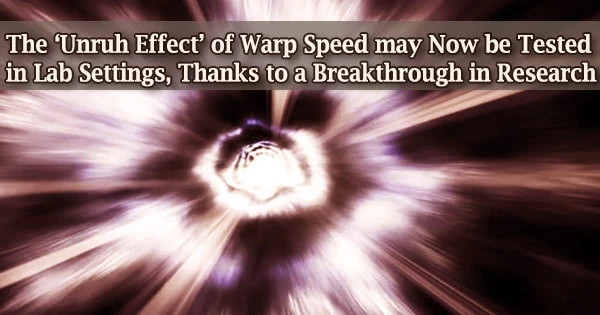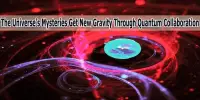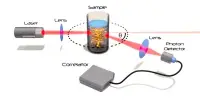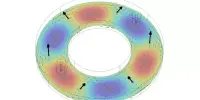The inability to test cutting-edge hypotheses in a laboratory setting is a key roadblock for work at the forefront of fundamental physics. However, a breakthrough finding allows scientists to observe phenomena that were previously only comprehended in theory or represented in science fiction in action.
The Unruh effect is one such theory. The Unruh effect is a warm glow that appears on top of the streaming light when astronauts in a spacecraft are subjected to extremely high acceleration and witness the light of stars pass by.
Stephen Fulling, Paul Davies, and W. G. Unruh were the first to describe the Unruh effect in 1973, 1975, and 1976, respectively. Because the stated observations are disputed, it is still unclear whether the Unruh effect has been observed. There’s also considerable debate regarding whether the Unruh effect indicates that Unruh radiation exists.
This effect is closely similar to Stephen Hawking’s expected light from black holes, which was first predicted by Canadian scientist Bill Unruh. This is due to the fact that black holes accelerate everything towards them.
“Black holes are believed to be not entirely black,” says Barbara Šoda, a PhD student in physics at the University of Waterloo. “Instead, as Stephen Hawking discovered, black holes should emit radiation. This is because, while nothing else can escape a black hole, quantum fluctuations of radiation can.”
The Unruh effect describes how an observer moving faster than the speed of light sees a thermal bath of particles with an effective temperature proportional to the correct acceleration rather than a vacuum.
To put it another way, the particle content of a given state in a quantum field theory is dependent on the observer’s frame of reference, as a result of which what one observer views as vacuum is described as being riddled with particles by another.
The Unruh effect, like the Hawking effect, necessitates huge accelerations in order to create a meaningful glow. As a result, the Unruh effect was assumed to be so small that it would be impossible to measure with existing equipment at the accelerations that can be achieved in tests.
The theory of general relativity and the theory of quantum mechanics are currently still somewhat at odds, but there has to be a unifying theory that describes how things function in the universe. We’ve been looking for a way to unite these two big theories, and this work is helping to move us closer by opening up opportunities for testing new theories against experiments.
Professor Achim Kempf
Through the use of high-intensity lasers, the study team discovered a fresh technique to experiment with the Unruh effect. They discovered that by putting a high-intensity laser on an accelerating particle, the Unruh effect may be amplified to the point where it can be measured.
In a surprising surprise, the scientists discovered that by properly regulating acceleration and deceleration, accelerated matter may be made transparent.
The capacity to test the Unruh effect as well as the novel phenomenon of acceleration-induced transparency is a huge step forward for physicists who have been trying to reconcile Einstein’s general theory of relativity with quantum mechanics for a long time.
“The theory of general relativity and the theory of quantum mechanics are currently still somewhat at odds, but there has to be a unifying theory that describes how things function in the universe,” says co-author Achim Kempf, a professor of applied mathematics and member of the Institute for Quantum Computing at Waterloo.
“We’ve been looking for a way to unite these two big theories, and this work is helping to move us closer by opening up opportunities for testing new theories against experiments.”
The team is now preparing to undertake more laboratory tests. They’re also enthralled by the research’s implications for some of the most fundamental problems in physics and the nature of the universe.
“For over 40 years, experiments have been hindered by an inability to explore the interface of quantum mechanics and gravity,” says co-author Vivishek Sudhir, an assistant professor of mechanical engineering at the Massachusetts Institute of Technology and an affiliate of the Laser Interferometer Gravitational-Wave Observatory (LIGO).
“We have here a viable option to explore this interface in a laboratory setting. If we can figure out some of these big questions, it could change everything.”
















